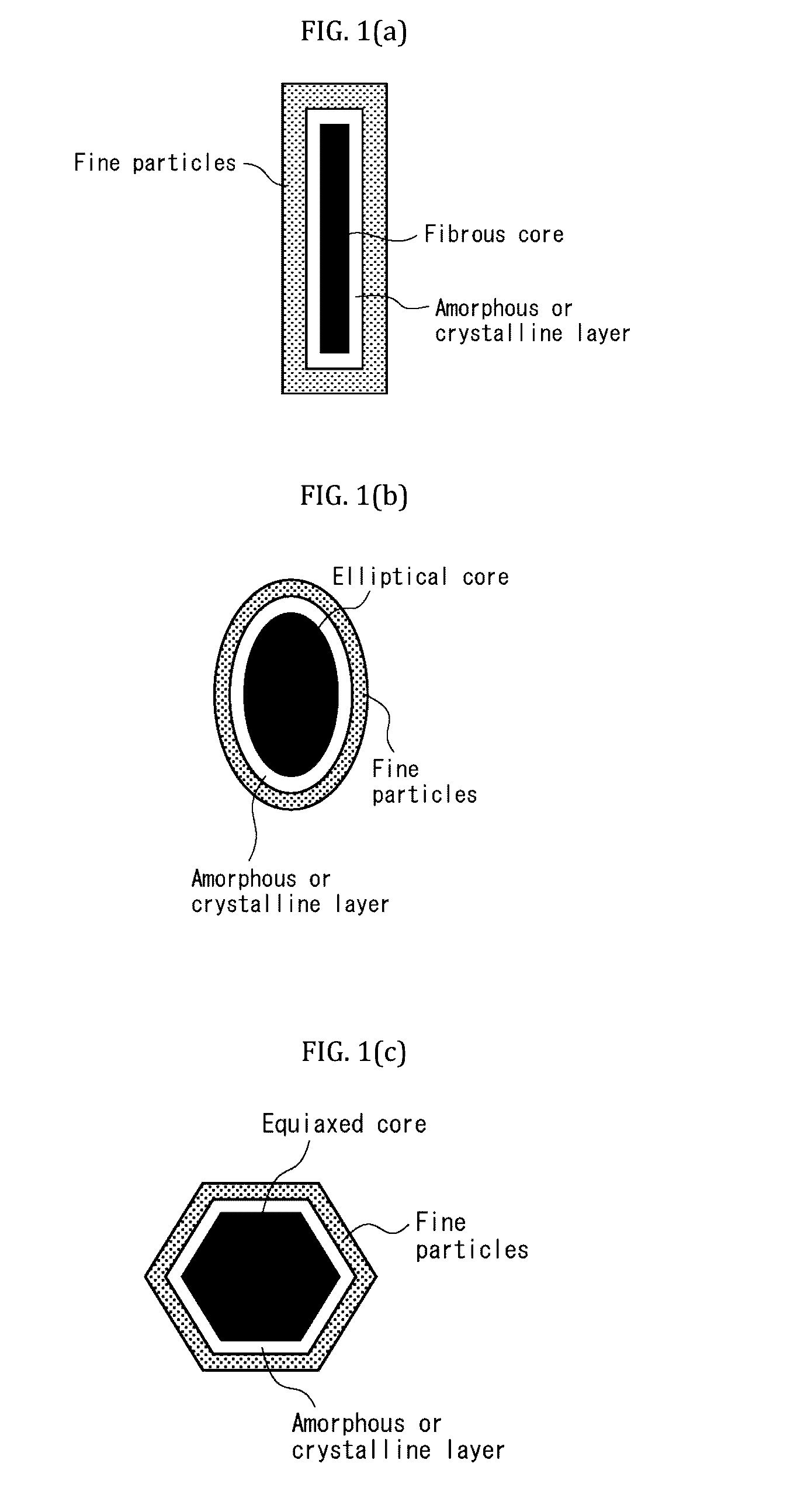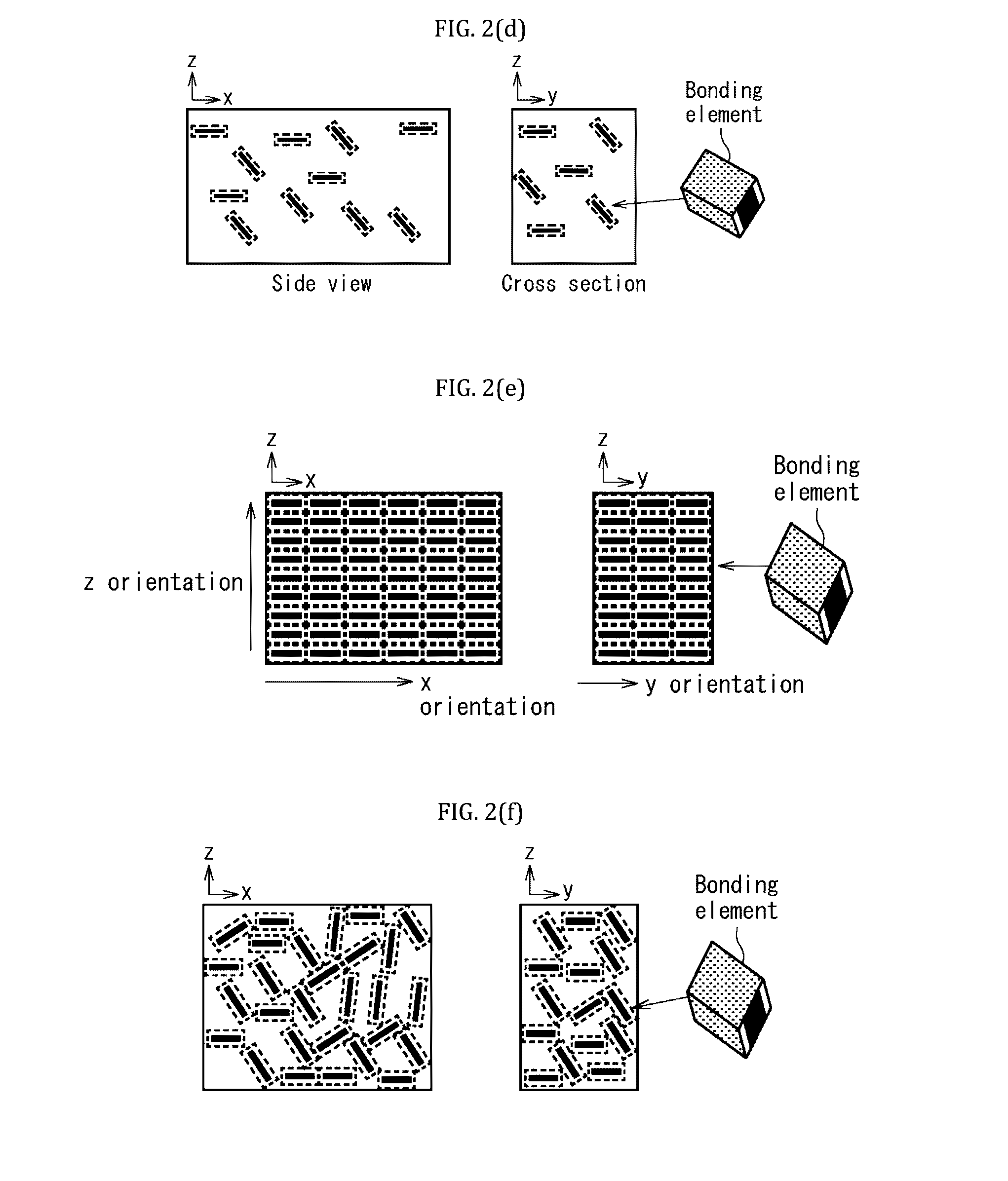Lightweight composite materials produced from carbonatable calcium silicate and methods thereof
a technology of carbonatable calcium silicate and composite materials, which is applied in the field of composite materials to achieve the effect of suppressing the undesired carbon footprint, mass energy consumption, and excessive emission of carbon diodes
- Summary
- Abstract
- Description
- Claims
- Application Information
AI Technical Summary
Benefits of technology
Problems solved by technology
Method used
Image
Examples
example 1
[0098]At W / S=0.45, Solidia cement (SC-L®, Solidia Technologies, Piscataway, N.J., USA) 92.50 wt %, lime 7.50 wt %, a water reducer (made by BASF, Glenium7500®, in the table, described as “Glenium”) 0.400 wt %, a lime initial hydration retarder constituted by sucrose 0.0378 wt %, a foaming agent constituted by aluminum powder (made by Yamato Metal Powder Co., Ltd., #87) 0.210 wt %, an Al initial foaming retarder constituted by phosphoric acid 1.0 wt % (with respect to Al), and water were mixed by a laboratory scale mixer. Here, first, the water reducer, sucrose, and Solidia cement (SC-L®) were added to a predetermined amount of water, then the mixture was continuously stirred for about 2.5 minutes to form a slurry. Next, lime was added to this and stirred for 30 seconds while forming a uniform slurry, and then Aluminum powder which was dispersed in phosphoric acid diluted in advance 100 fold and had been allowed to stand for at least 1 hour was added to the slurry which was then stir...
PUM
| Property | Measurement | Unit |
|---|---|---|
| Temperature | aaaaa | aaaaa |
| Temperature | aaaaa | aaaaa |
| Length | aaaaa | aaaaa |
Abstract
Description
Claims
Application Information
 Login to View More
Login to View More - R&D
- Intellectual Property
- Life Sciences
- Materials
- Tech Scout
- Unparalleled Data Quality
- Higher Quality Content
- 60% Fewer Hallucinations
Browse by: Latest US Patents, China's latest patents, Technical Efficacy Thesaurus, Application Domain, Technology Topic, Popular Technical Reports.
© 2025 PatSnap. All rights reserved.Legal|Privacy policy|Modern Slavery Act Transparency Statement|Sitemap|About US| Contact US: help@patsnap.com



